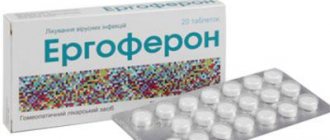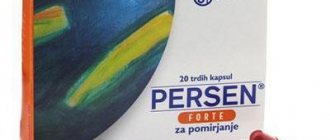Manganese is a metal that is not found in its pure form on our planet. Its salts are widely used in metallurgy to impart high strength to steel, as well as in the production of electrical and electronic products.
Source: depositphotos.com
Manganese and its compounds are very toxic. Poisoning by them is observed among workers in the steelmaking, mining and processing industries, as well as among those employed in the production of electrodes and among welders, that is, where contact with this metal occurs during work.
Ways of manganese poisoning
Manganese and its compounds are highly toxic. Most often used in industry. There are several ways for manganese compounds to enter the body:
- respiratory system;
- digestive tract;
- skin in rare cases.
Quite often, manganese enters the body in the form of dust. The element settles in the lungs and provokes the development of various pulmonary diseases. Manganese gradually penetrates the circulatory system and spreads throughout the body, causing disruptions in the functionality of many internal organs.
The element can accumulate in the body. The brain is sensitive to toxic effects; its damage occurs in the initial stages of poisoning. The compound leads to the appearance of inflammatory processes, weakened immunity, and the occurrence of allergic reactions.
Causes
Poisoning occurs among welding workers[3]. Numerous lawsuits against welding equipment manufacturers accuse them of failing to adequately communicate the concentrations and dangers of manganese fumes. Some homemade drugs contain manganese (due to the use of potassium permanganate for their preparation), the accumulation of which ultimately leads to what is called “manganese encephalopathy” in the domestic literature. In the countries of the former USSR, these are cathinone and methcathinone, ketone analogues of amphetamine and methamphetamine, obtained by the artisanal oxidation of phenylpropanolamine (cathinone) and, accordingly, ephedrine/pseudoephedrine (methcathinone) with potassium permanganate.[1] In the West, this role is played by the Bazooka, made from cocaine using manganese carbonate.[4] Also noted as sources are contaminated drinking water,[5] the fuel additive MMT (methylcyclopentadienyl manganese tricarbonyl),[6] which, during engine operation, is partially converted into manganese phosphates and manganese sulfate and released into the atmosphere,[7][8][9] and the pesticide maneb.[10]
Symptoms and stages of manganese poisoning
Symptoms of manganese poisoning appear some time after excess amounts are ingested. Therefore, intoxication with such a substance is of a chronic type. There are several stages of such an overdose, each characterized by the presence of certain symptoms.
Stage of functional impairment
This stage is characterized by the presence of symptoms common to many diseases. Therefore, it is often undiagnosed. Signs:
- severe fatigue;
- poor memory;
- headache;
- dizziness;
- weakness in the arms;
- lack of appetite;
- an increase in the size of the thyroid gland;
- lack of sexual desire;
- disruptions of the menstrual cycle in women;
- painful sensations in the abdomen.
During examinations, signs of gastritis, changes in mental state, and superficial thinking are noted. By stopping contact with manganese at the initial stage, it is possible to prevent the development of further damage to internal organs.
Stage of initial encephalopathy
At this stage, brain damage occurs. The patient is diagnosed with the following symptoms:
- speech dysfunction;
- problems with coordination;
- fixed gaze;
- increased muscle tone;
- impaired reflexes;
- weakening of facial expressions.
Stage of manganese parkinsonism
At the third stage of manganese poisoning, there is a serious disruption of the subcortical structures of the brain. It is characterized by the following manifestations:
- lack of reactions of the skeletal muscles;
- almost complete violation of facial expressions;
- inhibition of movement and other actions;
- lack of intonation when speaking;
- intellectual impairment.
The patient has a gait disturbance. The mental state suffers, periods of inhibition are replaced by emotional excitement and psychosis.
Disturbances in the functioning of internal organs and metabolic failures are diagnosed. The described symptoms are observed in case of poisoning through the respiratory tract.
Intoxication is possible when crystals of potassium permanganate or a high concentration of manganese solution enter the stomach. In this case, the victim experiences characteristic symptoms:
- increased salivation;
- pain in the abdomen;
- nausea and vomiting;
- intestinal disorder;
- nervous excitement;
- convulsive manifestations.
Burns appear on the skin of the mouth, the mucous membranes acquire a purple tint. Ulcerative lesions appear on them. When consuming a highly concentrated solution, the development of laryngeal edema is possible. The lethal dosage for an adult is 0.3-0.5 g per kilogram of weight, for children - 3 g.
Pathological mechanisms
Manganese can interfere with liver function, but experiments show that the threshold for toxicity is very high. On the other hand, more than 95% of manganese is excreted in the bile, and any liver damage can slow down detoxification, increasing plasma manganese concentrations.[11]
The neurotoxicity of manganese is not fully explained. There is evidence that manganese interacts with iron,[12][13][14][15]zinc,[16] aluminum,[12][16] and copper.[16] Based on a number of studies, disruption of iron metabolism is considered a possible mechanism of damage to the nervous system.[17] Oxidative damage is possible, a suggestion partially supported by a study of sick welding workers.[18]
One study suggests that welders exposed to manganese have fewer children.[19] It is possible that long-term accumulation of manganese affects reproductive ability. In animal studies, pregnancies with long-term exposure to high doses of manganese were more likely to result in congenital deformities in the offspring.[20]
First aid for manganese poisoning
In case of chronic manganese poisoning through the respiratory system, first aid is not required. If signs of intoxication with manganese compounds are detected, contact a medical facility. If the substance enters the stomach, the injured person is given emergency assistance:
- Rinse the stomach.
- Give a 0.5% solution of ascorbic acid to drink.
- Wipe the mucous membranes in the mouth with this solution.
The victim is provided with fresh air. Further treatment is carried out in a medical facility.
Use of the drug
A weak solution of manganese is used to provide timely assistance in case of severe intoxication of the body. You can use a low concentration of the drug:
- When do the first symptoms of poisoning appear? The person begins to vomit and feel sick;
- Manifestations of intoxication from low-quality alcoholic products are visible;
- Signs of intoxication with hydrocyanic acid, phosphorus and the alkaloid quinine are noticeable;
We recommend reading: Is it possible to go to the bathhouse and take a steam bath if you have hemorrhoids: answers from experts
After identifying the source of poisoning, experts recommend doing gastric lavage with a weak solution of manganese. The substance can be used to cleanse the intestinal walls of microorganisms and toxins using an enema.
Potassium permanganate can be used for children only with the permission of the attending physician.
When is medical help needed?
Medical care is provided for chronic manganese intoxication in any case. Before selecting therapy, a thorough diagnosis is carried out. To do this, the following examinations are prescribed:
- Magnetic resonance imaging.
- Blood tests to determine additional diseases.
- Electroencephalography to detect brain condition and function.
Treatment of poisoning is carried out depending on the stage at which it is detected. If a slight overdose of manganese is determined at the initial stage, then it will be enough to stop contact with the dangerous substance. For complete recovery, administration of vitamin B1 and glucose is prescribed.
If the second or third stage of poisoning is diagnosed, then treatment is selected aimed at cleansing the organs of manganese and normalizing the functioning of the internal organs.
Precautionary measures
- It is necessary to carefully check the solution for the presence of undissolved grains;
- Crystals should not be inhaled;
- When preparing, use only clean glass containers;
- Do not store the prepared solution. Its repeated use during gastric lavage after some time is prohibited;
- Potassium permanganate should be stored in a dry, dark place away from fire. This substance is explosive;
- Do not use the solution for drug poisoning;
- After preparing and using the solution, wash your hands thoroughly;
- Manganese is incompatible with granulated sugar, coal and flammable substances;
- Do not apply potassium permanganate to large areas of the skin with severe damage;
- Before use, it is necessary to test for allergic reactions;
Consequences and prevention
If manganese intoxication has reached the second or third stage, then the consequences in most cases are irreversible. Complications after poisoning include:
- reduced mental abilities;
- coma;
- epileptic seizures;
- dementia;
- mental state disorder.
In especially severe cases, death may occur. To avoid poisoning, you must follow safety precautions when working with manganese:
- wear protective clothing;
- use a respirator;
- undergo medical examinations on time.
A solution of potassium permanganate is prepared according to the instructions for use to avoid burns and intoxication.
Manganese poisoning leads to disruption of the functionality of many internal organs. Having discovered the first signs, it is recommended to go to the hospital for examination and selection of suitable treatment. Compliance with prevention will help avoid poisoning.
Basic Rules
In case of poisoning, the most important thing is not to waste time so that toxins do not circulate throughout the body, aggravating the intoxication. Is it possible to drink a weak solution of potassium permanganate? Yes, but only so that its concentration does not exceed 0.1%. This is quite easy to do. You don't even have to do any additional weighing to do this. You just need to add 2 crystals of powder per liter of boiled water. The solution should be pale pink. A more saturated solution can lead to damage to the mucous membranes of the digestive organs. It is recommended to strain it first. This will prevent the possibility of undissolved crystals getting on the mucous membranes.
We recommend reading: Herbs for heartburn: quick and easy recipes, potions, tinctures
Video: how manganese affects the body
Read further:
Rehabilitation after a heart attack, prevention of new attacks and care
10 ways to strengthen your immune system
Ways to eliminate swelling after mosquito bites
Is computed tomography (CT) scanning harmful to human health?
How to clean blood vessels with folk remedies
Article rating:
Share with friends:
You may also be interested in:
Finlepsin poisoning: symptoms and treatment methods, consequences
Overdose of Diclofenac: symptoms and consequences of poisoning
Poisoning with the drug Phenotropil
Thyroxine overdose
What happens if you drink potassium permanganate, its harm and benefits
In case of poisoning with low-quality food products or toxic substances, a slightly pink solution of potassium permanganate is often used to rinse the stomach cavity. Back in the 90s, a barely pink solution was used to bathe babies to prevent suppuration of the umbilical wound.
Now you can buy the drug in a pharmacy only with a doctor’s prescription, but this substance still does not lose popularity and is actively used not only for medicinal purposes, but also in gardening.
Many people are concerned about the question, what will happen if you drink potassium permanganate with water? There may be no consequences at all, or there may be quite severe damage to organs if the solution was highly concentrated.
Diagnosis of the disease
For the differential diagnosis of such poisoning, the following methods are used.
- Magnetic resonance imaging using a contrast agent. It helps to clearly and accurately determine where toxic substances accumulate in organs and tissues.
- Blood analysis. A biochemical examination is used to determine the degree of functional disorders in the body.
- An EEG of the brain helps determine the condition and degree of dysfunction of this important organ. Moreover, such a procedure should be carried out at the treatment stage.
Presence of manganese in the natural environment
Manganese is a fairly widespread element of the earth’s crust in natural conditions, often accompanying iron in ore and occurring in the form of independent deposits. On the territory of Russia it belongs to the category of acutely scarce raw materials.
Manganese minerals are represented by:
- pyrolusite;
- manganite, or brown manganese ore;
- brownite;
- hausmannite;
- rhodochrosite, or manganese spar;
- psilomelane;
- purpurite.
In order to obtain pure metallic manganese, the process of electrolysis is used, and ferromanganese is the result of the reduction of oxide iron-containing manganese ores with coke. By its nature, manganese is a monoisotopic element, one of which exists in the natural environment. Mn isotopes obtained artificially are unstable and radioactive.
Applications of Mn
Manganese is used in the chemical and metallurgical industries, and also finds application in many other areas:
- “deoxidation” of steel during melting;
- binding of sulfur to improve the properties of any steel produced;
- smelting armor steel;
- introduction to bronze and brass;
- production of galvanic manganese-zinc elements;
- fine and industrial organic synthesis;
- production of terephthalic acid;
- analytical practice and pharmaceutical analysis;
- biochemical analysis.
KMnO4 (potassium permanganate) is used in medicine and pharmacy as an external preparation with antiseptic characteristics and cauterizing properties. Potassium permanganate poisoning is the result of improper use of a manganese-based antiseptic.
Diagnostic features
Numerous formations of dense consistency are formed in the tissues of those affected by manganese. The composition of granulomas is represented by ions of various metals, neutrophils and leukocytes, as well as single fragments of collagen fibers.
After a general medical examination and a mandatory history taking, the doctor prescribes a series of examinations, which include the following measures:
- X-ray of the chest cavity;
- MRI examination;
- CT diagnostics;
- electroencephalography;
- myography;
- general and biochemical blood tests;
- general urine analysis.
The exact concentration of toxic manganese in any studied biological fluids is determined quite rarely, and the presence of serious deviations from the norm indicates chronic intoxication.
Treatment of intoxication
If you suspect such poisoning, you should urgently call an ambulance team. Treatment is necessary in all cases of poisoning without exception.
First aid for potassium permanganate poisoning consists of the following measures.
- Gastric lavage (drink a large amount of warm water and induce vomiting).
- Give the patient a solution of vitamin C (0.5%).
- Clean the oral cavity with a cotton swab moistened with a one percent solution of the same vitamin.
- Ventilate the room.
All other detoxification activities are performed by staff only. At the stage of functional disorders, intravenous drip infusions of vitamin C, B1, and glucose solution are indicated. To treat polyneuritis, Novocain is administered intravenously.
To remove manganese from the body, a special antidote is used - calcium disodium salt of ethylenediaminetetraacetic acid.
To treat parkinsonism caused by exposure to manganese, symptomatic therapy is mainly used. The following medications are used:
- Belladonna root tincture.
- Dinezin.
- Scopolamine.
- Tropacin.
- Corbella.
In addition, to accelerate the elimination of toxic substances, the method of forced diuresis is used. To speed up the recovery period, patients are advised to administer drugs that stimulate the functioning of the brain, liver, and kidneys. It is extremely important to restore metabolic processes, for which a person is prescribed dietary supplements.
Treatment of manganese poisoning in children should be carried out only in a hospital setting due to the severe toxicity of this substance.










